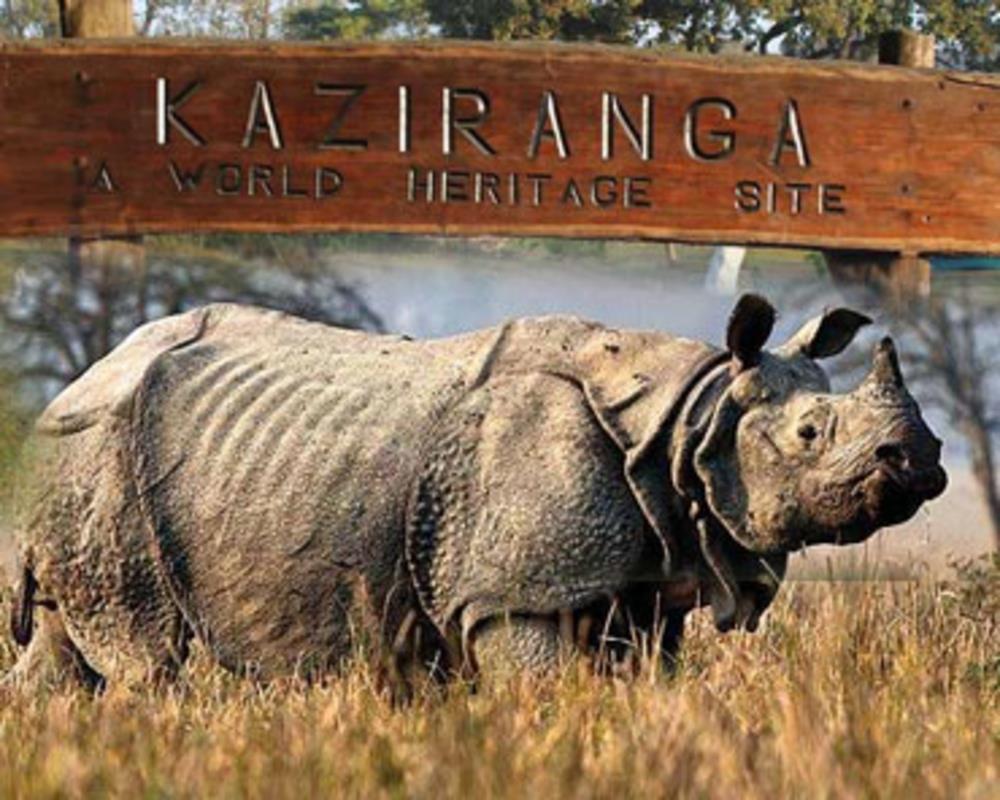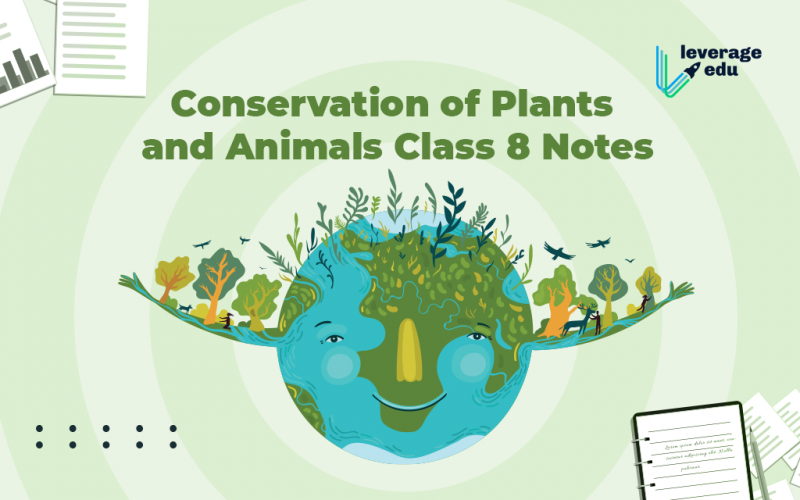Conservation of Plants and Animals in Class 8 Notes begins with a story about Paheli and Boojho visiting the forest with Prof. Ahmad and Tibu. They were happy to tell their classmates about their adventures. Others in the class, some of whom had visited the Bharatpur Sanctuary, were also willing to share their experiences. Others knew about Kaziranga National Park, Lockchao Wildlife Sanctuary, Great Nicobar Biosphere Reserve, and Tiger Reserve, among other places. Hence this blog on Conservation of Plants and Animals class 8 notes will make you understand topics like deforestation, reforestation, conservation of plants and wildlife, different types of species, ecosystem and a lot more. So if you wish to know more about how one can conserve plants and animals, then read this blog on Conservation of Plants and Animals class 8 notes till the end.
This Blog Includes:
Deforestation

Let us first understand what is deforestation in our blog on the Conservation of Plants and Animals class 8 notes. According to this chapter of class 8 science, deforestation is described as the rapid clearing of forests and the use of the land for various purposes. Many living species face extinction as a result of it.
Extinction, on the other hand, occurs when a species becomes extinct on Earth. When a species’ last living human dies, the species is considered extinct.
Also Read: Class 8 Science
Causes of Deforestation
According to the chapter of Conservation of Plants and Animals class 8, the various causes of deforestation are mentioned below:
- Urbanization is accelerating.
- For agricultural purposes and the acquisition of land for cultivation
- For the purpose of obtaining gasoline.
- For the purpose of establishing industries, buildings, homes, and factories.
- For the building of furniture.
- Deforestation is often caused by natural events such as forest fires, droughts, and other natural disasters.
Also Read: NCERT Class 8 Maths Syllabus
Consequences of Deforestation
Our blog on Conservation of Plants and Animals class 8 notes is incomplete without mentioning the consequences of deforestation. These are:
- Temperature and pollution levels are increasing.
- The level of groundwater has dropped.
- Rainfall and soil fertility are both decreasing.
- Natural disasters such as floods and droughts are becoming more common.
- Water holding capacity and infiltration rate of soil both decrease.
- Deforestation alters the soil’s other properties, such as nutrient content, texture, and so on.
- Desertification
- Global Warming
We as an individual are all aware of the fact that if the number of trees decreases due to deforestation, the amount of carbon dioxide in the atmosphere rises. The carbon dioxide gas absorbs the heat rays emitted from the earth’s atmosphere, causing a rise in global temperature as well as disrupting the water cycle and possibly reducing rainfall, which eventually results in droughts.
Reforestation
In simple words, reforestation is the process of replenishing deforested areas by planting new trees and more trees. Some of the important steps that are to be followed during reforestation are mentioned below:
- Attempt to grow or plant new trees of the same species that were previously present.
- Plant the same number of trees that were cut down, if not more.
- Natural reforestation occurs when trees are allowed to grow naturally at a deforestation site. In this case, no human intervention is needed.
- Forest Act – This law was enacted to protect and restore forests so that the people who live in them would meet their basic needs.
Also Read: Science Projects for Class 8
Conservation of Forest and Wildlife

Let us now take our blog further, which is on Conservation of Plants and Animals Class 8 notes. The government has adopted a number of laws, practices, and strategies to avoid deforestation and to protect forests and wildlife. Plantations, agriculture, grazing, hunting, poaching, and other practises are forbidden in areas known as sanctuaries, national parks, and biosphere reserves, among other items. Let us know more about these areas in brief.
| Sanctuary | Sanctuaries are areas where animals and their residents are protected from outside threats and where human activities are restricted. Corbett National Park in Uttarakhand, Ranthambore National Park in Rajasthan and others are well-known sanctuaries in India. Many endangered animals, such as the blackbuck, white-eyed buck, elephant, golden cat, pink-headed duck, gharial, swamp crocodile, python, rhinoceros, and others, have found refuge in this wildlife sanctuaries. |
| National Parks | National parks are areas where animals are able to use their natural habitats and resources. These are vast and diverse reserves that offer protection to the entire ecosystem. They protect the area’s plants, livestock, lands, and historic artefacts, among other things. Bandipur National Park in Karnataka, Keoladeo Ghana National Park in Rajasthan and others are well-known national parks in India. |
| Biosphere Reserve | Biosphere reserves are those areas that are dedicated to the protection of birds, livestock, plants, tribal traditions, and so on. These are the areas designated for biodiversity protection. The biodiversity and history of that specific region are covered by the biosphere reserve. Nilgiri biosphere reserve in Karnataka, Sunder bans in West Bengal, and others are well-known biosphere reserves in India. |
Biodiversity
Our next topic to revise in our blog on Conservation of Plants and Animals class 8 notes is biological diversity, also known as biodiversity. It refers to the diverse range of species that live on the planet, their interrelationships, and their interactions with the environment in simple terms. It constitutes flora, which is known to be as the plants of a particular region or area, and fauna, which are known to be as the animal population of a particular region or area.
Also Read: Essay on Sustainable Development: Format & Examples
Species and Different Types of Species
Let us now jump onto the topic of species in our blog which is on Conservation of Plants and Animals class 8 notes. In simple language and words, A community of organisms capable of interbreeding is referred to as a species. They can only breed and give birth to infants of the same species as themselves. The traits of these species would be the same. Some of the types of species that are discussed in the chapter of Conservation of Plants and Animals class 8 are mentioned below:
| Species | Description | Examples |
| Endemic Species | There are animals that are absolutely restricted to a single location and cannot be located elsewhere. Any animal or plant can be found only in a specific region, state, or nation and are hence termed an endemic species. | Endemic species include trees such as sal and wild mango, as well as animals such as bison and Indian giant squirrel, which are only present in the Pachmarhi Biosphere Reserve. |
| Endangered species | Endangered species are those whose populations are slowly dwindling and could become extinct in the near future. Smaller species, on the other hand, are more likely to become endangered than larger animals. | Snow leopards, Giant Pandas, Whooping Cranes, and other endangered species are examples. |
Ecosystem
Our blog on the Conservation of Plants and Animals class 8 notes is incomplete without mentioning and explaining what is an ecosystem. It’s a system that includes all of the plants, animals, and microorganisms that live in a given environment, as well as non-living elements like air, water, and soil. For the proper functioning of an ecosystem, each and every organism, whether it be snakes, frogs, lizards, bats, or others, is equally necessary.
Also Read: NCERT Class 8 SST Syllabus
So this was pretty much everything that one must be required to learn from this Science chapter of class 8 on Conservation of Plants and Animals. We hope that you must have liked our blog on Conservation of Plants and Animals class 8 notes and are fully ready and prepared to score high in your exams. For more such easy and amazing study notes and reads, stay tuned with Leverage Edu.

 One app for all your study abroad needs
One app for all your study abroad needs






















 45,000+ students trusted us with their dreams. Take the first step today!
45,000+ students trusted us with their dreams. Take the first step today!


